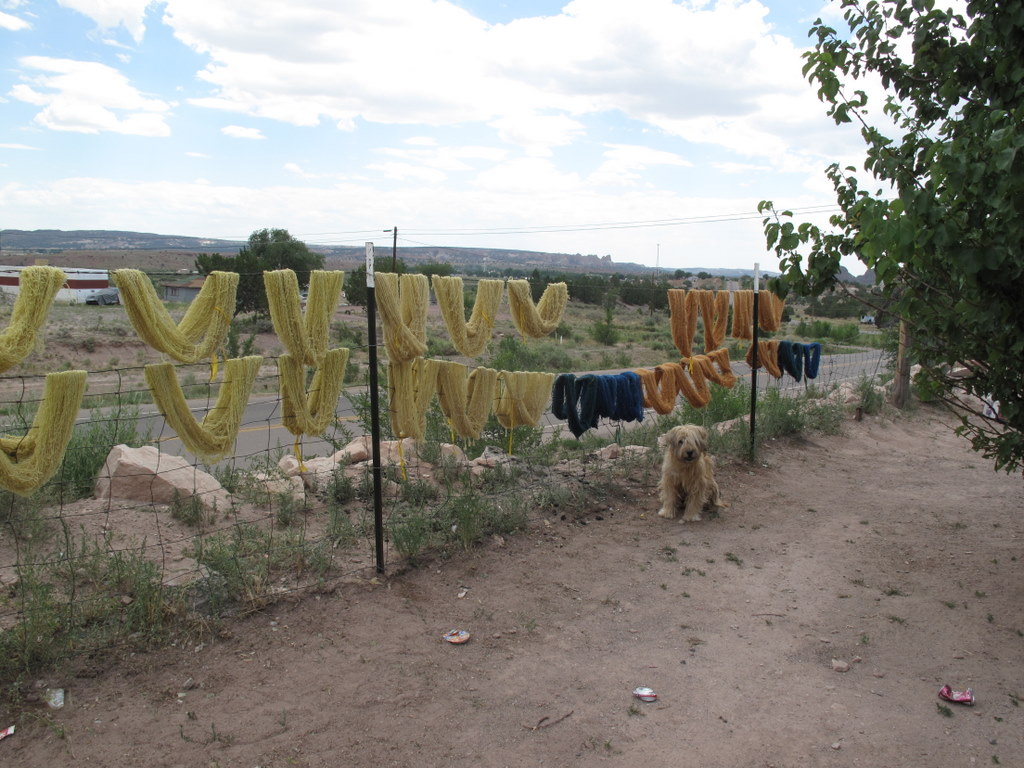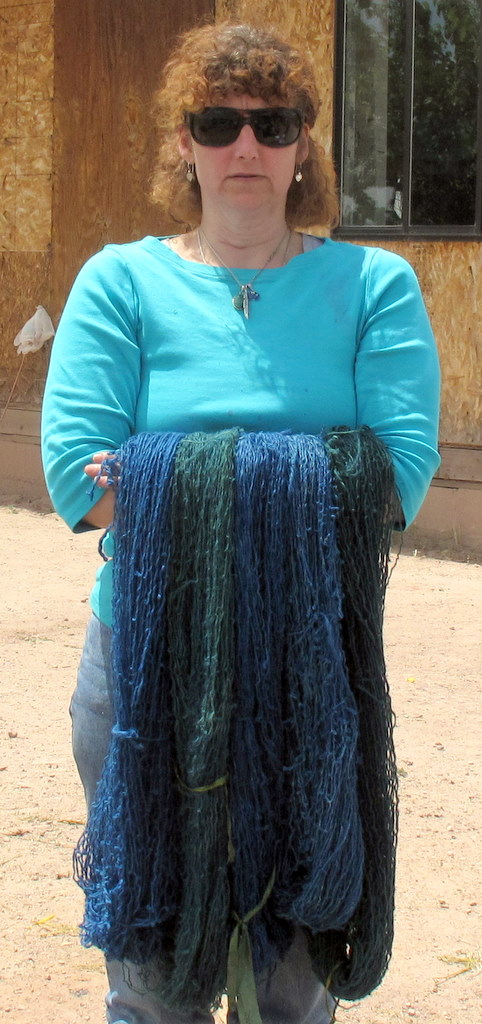In Window Rock: Trying Our Hand at Natural Dyes
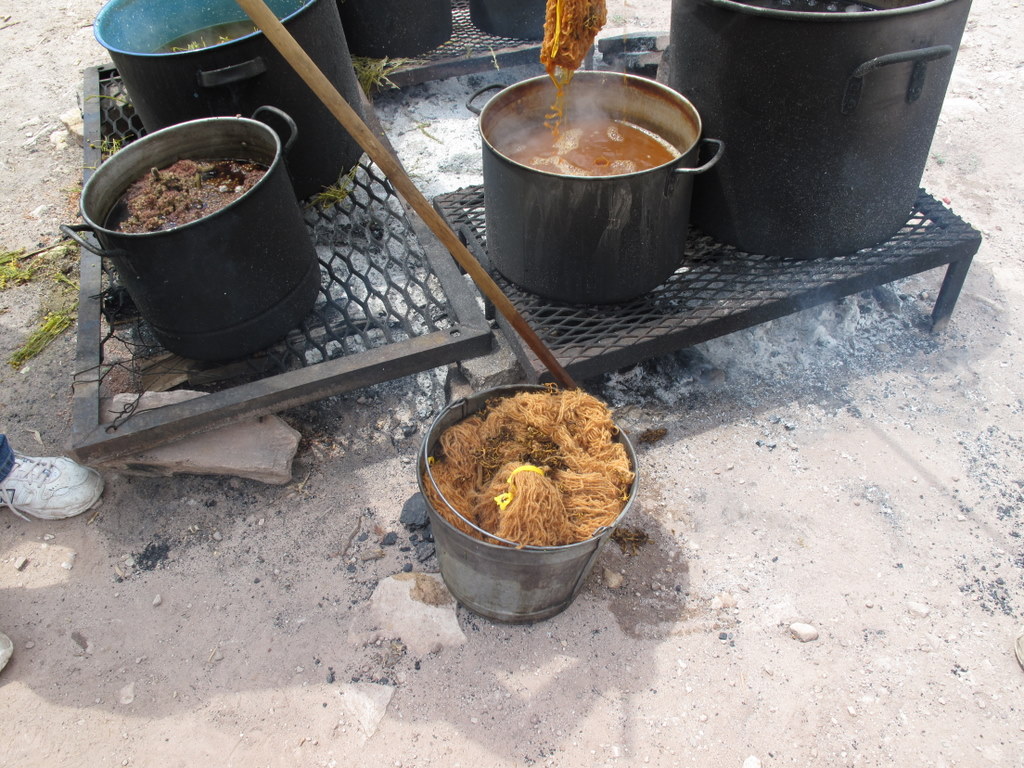
Yarn dyed with ground lichen has come off the fire and you can see some dyed with wild carrot being checked for color.
Window Rock, AZ Let me get you caught up on the activities of some of our recent classes in Window Rock. I was forced to abandon daily entries during the classes because there were continuing connectivity issues both with the hotel broadband and with the broadband service that I have on my laptop. Being forced to contemplate life without cascading style sheets and PHP would probably make for interesting reading for somebody out there, but let’s face it, it has nothing whatsoever to do with Navajo weaving beyond not being able to write about it when you want to. There’s also the security issue that things can be a little too real time and there may be somebody out there saying, “Hey, if Ann’s in Window Rock, I wonder who’s watching her house?” But enough of that, let’s talk weaving, which in the Navajo way of looking at weaving encompasses dyeing. When Navajo people talk about weaving, they mean the whole process from taking care of the sheep to taking the weaving off the loom. Especially in the summer, it would be a shame for people like us to be in Window Rock and not explore the dye potential of the local plants.
We ventured out on Tuesday, August 4, to meet with Rose Dedman, gather the plants for the dyes and to dye some wool under her supervision. Rose’s late mother was an active dyer all her life, and Rose does her dyes the old fashioned way, over an open fire. We had already stalked The Elusive Wild Carrot, so Rose had us gather ground lichen, sage and rabbitbrush. Tammy Denhard had brought black walnuts with her, so we were set. Once Rose decided that the pots were ready, we immersed the pre-washed yarn for about 30 minutes. The pots stand for about 20 minutes off the fire, and Rose’s mother might have left them in overnight or longer to achieve the color she was looking for. Since the temperature was perfect for it, we also had an instant indigo vat and did some great over-dyes as you can see in the picture below.
Rose graciously showed the class some of the biil dresses that she has made for her granddaughters to wear on important occasions. The dress is made by sewing two rectangular weavings together, leaving openings for the arms and neck. A sash belt, concho belt, traditional moccasins complete the ensemble.
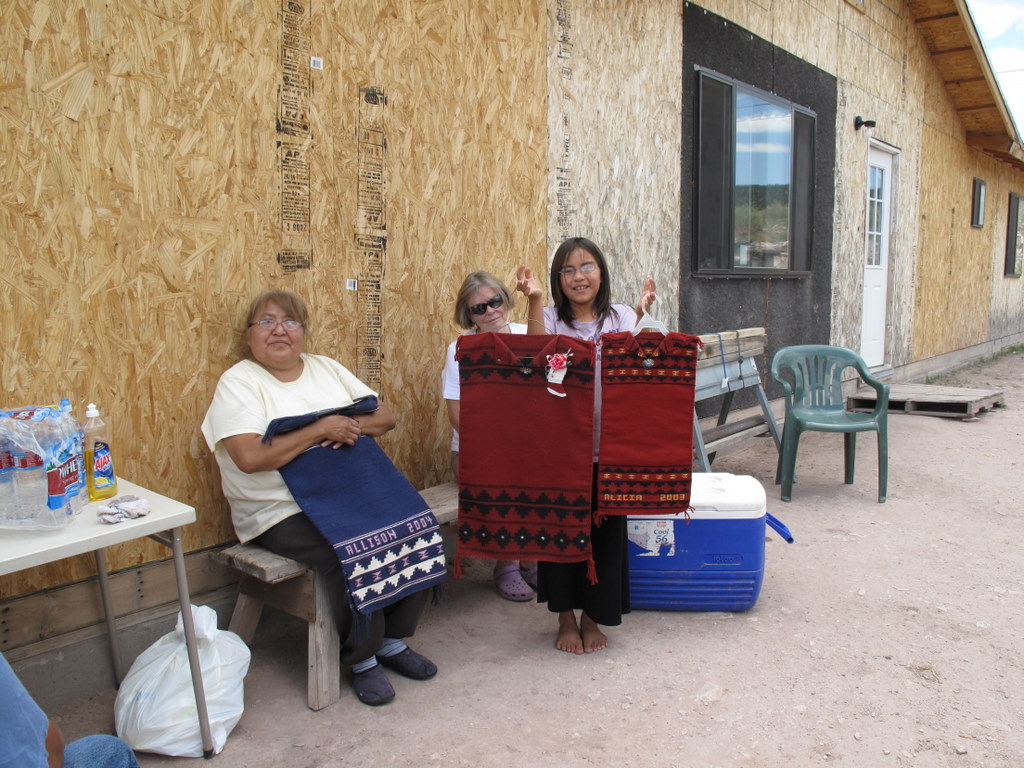
Lorna Stone (center, back) admires the biil dresses that Rose Dedman (left) has woven for her granddaughters
We cleaned up the dye pots under Rose’s supervision and cooked some hamburgers and hot dogs for lunch before heading back to the classroom for more weaving. Luci Hicks, as you can see below was well past the halfway point in her piece and we started to plot various schemes to slow her down. We settled on a trip to Canyon de Chelly for the next day. Yeah, that ought to do it….
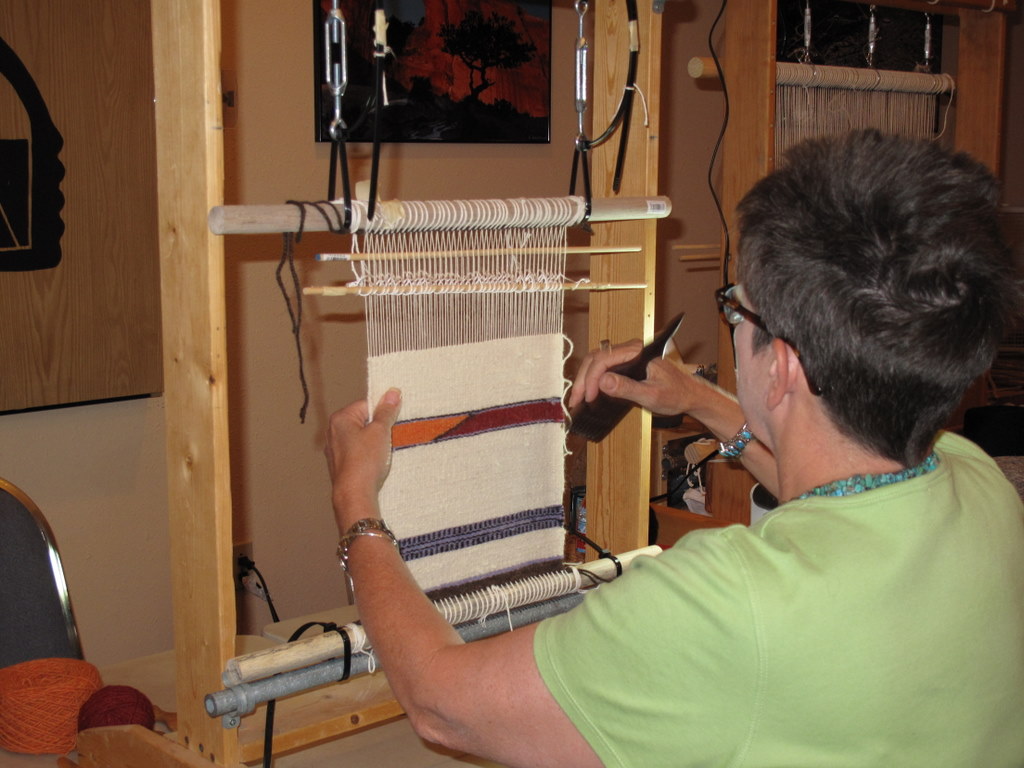
Hey, Luci, you've got until Saturday morning! Note the excellent weaving form and the unique design.
I’ll share some pictures from Canyon de Chelly next.
Hagoshíí (so long for now)
Mary Walker
